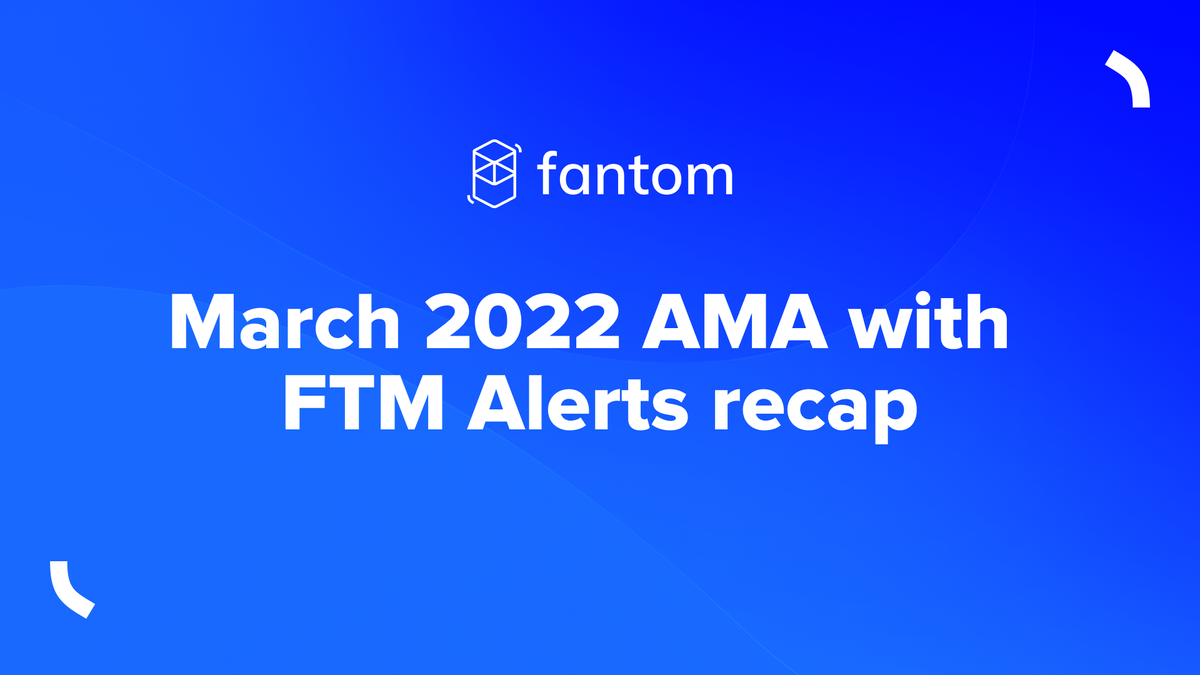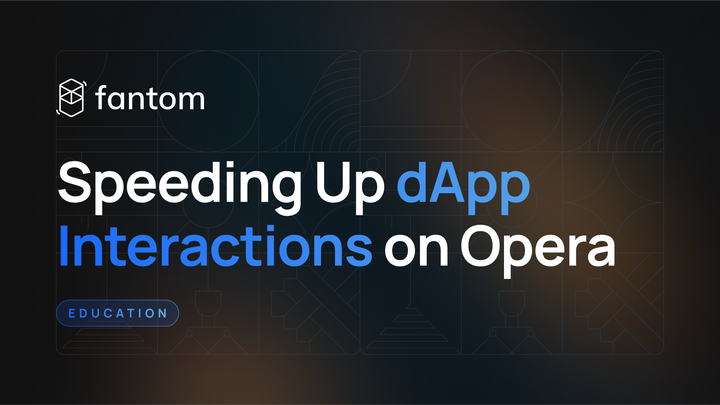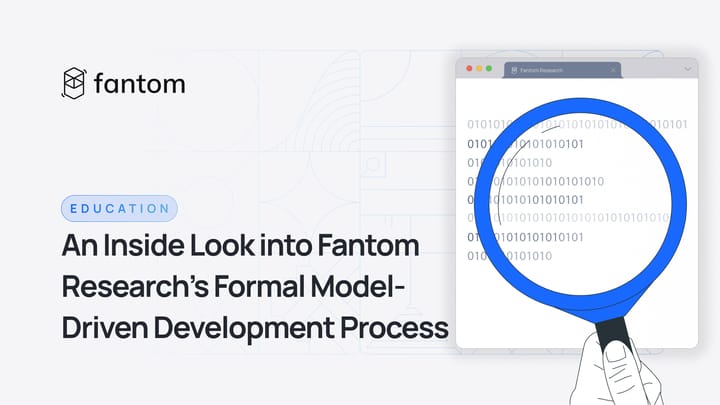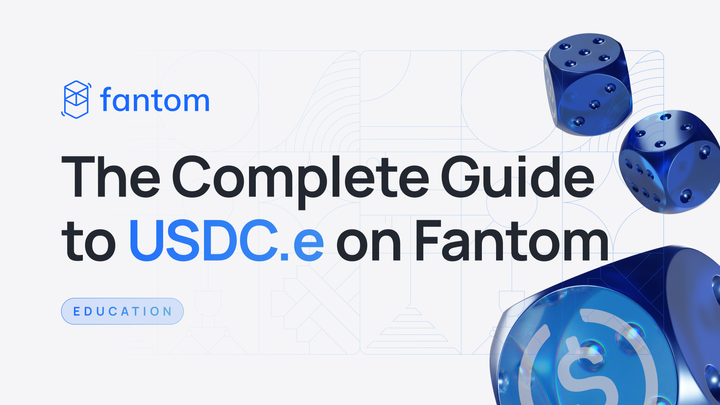March 2022 AMA with FTM Alerts recap

On March 29, 2022, Austin of FTM Alerts held an AMA with Michael Kong, CEO of the Fantom Foundation, and core team members Simone Pomposi (CMO), John Morris (Head of US), and Samuel Harcourt (Head of Business Development).
- Can you tell us how Andre’s departure will affect Fantom?
- What does the Foundation currently see as the biggest challenge or biggest challenges for Fantom?
- Since the Solidly launch, there seem to be some RPC issues still present. What is Fantom doing to accommodate the higher daily traffic?
- What are the next significant catalysts or opportunities that will accelerate growth?
- Can you share any updates or thoughts on how the incentive program has performed since launch? Is there a chance to get more transparency?
- If we want to be seen more than DeFi, will there be an incentive program for other areas?
- Do you have any plans to focus on attracting non-crypto native users to the chain?
- What is the Foundation most focused on shipping right now?
- Will the FVM rollout happen as a single event or over time?
- Once Fantom is fully emitted, what are the plans to incentivize validators?
- Could you tell us about EIP-1559 and if that is something that may be implemented on Fantom?
- Does the Foundation have any plans to doxx team wallets to provide greater transparency?
- Vote quorum seems difficult to achieve for many proposals. Any idea on how to get more activity so that votes are cast and proposals passed?
- Any plans for another Fantom Conference? USA meetups?
- Is the Foundation at all concerned that the current liquid staking setups may hand voting power directly to the validators themselves and out of the hands of the delegators?
1. Can you tell us how Andre’s departure will affect Fantom?
MK: Everything is the same. Neither Andre nor Anton are core developers on Fantom, and we continue with our work. The Foundation has put out a list of facts indicating that nothing has changed.
Andre played a pivotal role in helping kick start the team and giving them ideas to explore related to distributed computing. But since 2019, he hasn’t been that involved in consensus or the underlying technology.
2. What does the Foundation currently see as the biggest challenge or biggest challenges for Fantom?
JM: Demonstrating to our community, investors, and the world that we’re a top 10 chain.
We take a steady long-term view and focus on impactful development that will inevitably show in metrics like market cap.
MK: The biggest challenges are mainly around technology: improving scalability, security, and decentralization, and optimizing the workload and communication between nodes.
We’re in the process of deploying SnapSync and working on auto-pruning solutions and server technologies that will reduce the memory used for RPC. We are also exploring how to execute smart contracts faster by working on middleware technology.
SP: Similarly to John, one challenge is how to stay relevant in the long term in this highly competitive space.
SH: I see three main challenges.
- Maintaining inbound support. Fantom is a hot chain, and many projects want to talk to us.
- Finding creative ways to incentivize validators in the long term.
- Encouraging a more active voter base as we’re seeing low participation in voting on governance proposals.
3. Since the Solidly launch, there seem to be some RPC issues still present. What is Fantom doing to accommodate the higher daily traffic?
MK: Rolling out new RPC systems on our nodes and nodes in the community will help throughput. Longer-term, we’ll work on the middleware stack and flat storage solutions.
SnapSync and auto-pruning will help nodes sync faster and let us increase the gas per second of the network. This will increase network throughput.
4. What are the next significant catalysts or opportunities that will accelerate growth?
SH: We need the community to continue to cooperate and work together. That interaction is significant to Fantom, and you don’t see it with any other chains.
JM: If the community is the catalyst, we need to fuel that growth with accretive partnerships that help ideas and projects flourish.
SP: Covalent (Covalent gathers data from different blockchains, including Fantom) shared that the data on Fantom is super organized, unlike on other chains where it is generally a mess.
This shows how Fantom developers communicate. They’re in touch with each other and build together, even if they are competitors to a degree. This makes Fantom unique.
As for the next catalyst, it could be the new grant program.
MK: I believe that a catalyst will be the growth of NFTs. We’ve been talking to many gaming and metaverse projects. For instance, we just invested in a gaming guild called Balthazar that wants to add services to projects on Fantom.
But people should remember that Fantom is more than a DeFi or NFT chain.
5. Can you share any updates or thoughts on how the incentive program has performed since launch? Is there a chance to get more transparency?
SH: We take a non-biased approach, and the rules that we apply make it fair for anybody. We support all projects. When we started, Fantom had around $750 Million TVL, and now we’re at about $8 Billion, so the incentive program did add value.
But there is room for improvement. We’ve learned from the successes and failures of the incentive program and are implementing a grants program that involves the community and offers opportunities to even newer, smaller projects.
MK: The objective metrics behind the incentives program had issues where people could “game” the system. We’re overhauling the incentives program, putting in a more transparent and efficient system. The new grants program is the product of careful thinking about how we can best support growth on the network.
6. If we want to be seen more than DeFi, will there be an incentive program for other areas?
MK: The answer is absolutely yes. There will be other metrics for analysis. We will reveal details in future articles.
7. Do you have any plans to focus on attracting non-crypto native users to the chain?
FTM Alerts: I just want to shout out Pietro Fittipaldi. Simone and I recently spoke with him. His demographic will be the next generation of crypto users.
SP: Pietro Fittilpaldi and his brother Enzo are motorsports drivers. Enzo is a Formula 2™ driver, and Pietro is a reserve and test driver for the Haas Formula 1™ team. They have the second biggest motorsport Twitch channel globally ‒ mainly teenagers who love tech and follow the brothers also for their online racing. It’s the perfect new user base, and ideally, they will come to blockchain without knowing that they are using it.
Our sponsorship of Pietro and Enzo includes streaming GameFi projects launched on Fantom. This will draw the attention of hundreds of thousands of people to projects and Fantom.
JM: We need to make it easy for established Web2 projects and their users to seamlessly move to Fantom and benefit from all the advantages we offer.
MK: I’m doing a lot more traditional media outreach. Like that interview at the Nasdaq marketplace. It’s just a matter of time before blockchain becomes as ubiquitous to individuals as the internet.
8. What is the Foundation most focused on shipping right now?
MK: The first thing being shipped out is SnapSync and improvements to the RPC nodes. Later on, will be auto-pruning and then a bit further on the first iteration of a flat storage solution.
SP: And the new wallet, which is ready. We’re doing just a little bit more internal testing.
9. Will the FVM rollout happen as a single event or over time?
MK: Multiple components underneath the FVM will also be upgraded, and in the end, we’ll see at least a ten-fold increase in performance.
The process will take a few years, but there will be incremental changes with components being added one at a time. You won’t have to wait to see improvements.
Our new Chief Research Officer, Professor Scholz, will lead the reworking of the middleware stack. He has a strong understanding of the Fantom technology stack, and we’re asking him to put his research ideas into practice. His role will be to lead a team focusing on middleware improvements.
10. Once Fantom is fully emitted, what are the plans to incentivize validators?
SH: You can get creative to open a diversified revenue stream to run a validator, such as validators being paid for running price feeds for oracles seeking decentralization.
Liquid staking and code optimizations that make running a validator node cheaper should increase margins.
MK: We’re exploring implementing EIP-1559 and adding other use cases than just staking FTM.
SP: Justin Silver (DoubleSharp) and I discussed using EIP-1559, but instead of burning the fees, rewarding the validators. It’s a creative solution, and Justin is a brilliant mind.
11. Could you tell us about EIP-1559 and if that is something that may be implemented on Fantom?
MK: EIP stands for Ethereum Improvement Proposal. EIP 1559 changed the model, adding minimum base fees for transactions depending on traffic. Users can prioritize their transactions by adding a supplemental fee called a miner-tip. The priority fee goes directly to the miner, but the base fee gets burned by the network to create a deflationary aspect.
On Fantom, 30% of all transaction fees are already burned, but the model would work similarly.
FTM Alerts: Regarding fUSD, I spoke to the OIN team yesterday, who said they had a proposal that did not get passed. I know that Lafa from Deus has now put in a proposal essentially to take over fUSD. Do we have liquidations ready to go for fUSD?
SH: We want to have someone ready to go before changing anything. A healthy migration from fUSDold to fUSDnew is important. We want to take it slowly so that nobody gets hurt.
12. Does the Foundation have any plans to doxx team wallets to provide greater transparency?
MK: Information on our single-sign and multi-sig wallets is out there and already transparent.
13. Vote quorum seems difficult to achieve for many proposals. Any idea on how to get more activity so that votes are cast and proposals passed?
SH: One solution is lowering the requirements to 66%, and then people need to think about what will push validators to vote.
14. Any plans for another Fantom Conference? USA meetups?
MK: We’re going to be attending several events. One of them coming up is going to be Consensus 2022.
15. Is the Foundation at all concerned that the current liquid staking setups may hand voting power directly to the validators themselves and out of the hands of the delegators?
MK: The community will need to ask liquid staking providers to provide the same voting interface as Fantom. We would like to encourage it, but it's up to the community and the liquid staking providers within the larger FTM marketplace.
FTM Alerts: We got to the end! The biggest takeaway for me is that Fantom is in a very sound and very strong place. Is there anything you’d like to add?
SH: I would just encourage anyone who needs marketing information, technical support, or a connection to the community to reach out to us at info@fantom.foundation, and we’ll happily support you.
JM: Please reach out with ideas as well. If you have an idea for collaborations, partnerships, tooling, or anything – we try to make ourselves as accessible as possible. Thank you to everyone also for promoting the ecosystem.
MJ: I just want to thank the community for being with us throughout what sometimes seems like a roller coaster of highs and lows. What we’re building is for the strong community around Fantom. People like yourself, Austin, and others like DoubleSharp have played a pivotal role in helping to grow the ecosystem, educate people, and just spread the word about the Fantom network, so I appreciate that as always.
SP: Thanks to the community and Fantom builders. You’re all great. I can’t stress enough what a truly unique community we have. It’s not easily replicable on other networks. So thank you so much.



